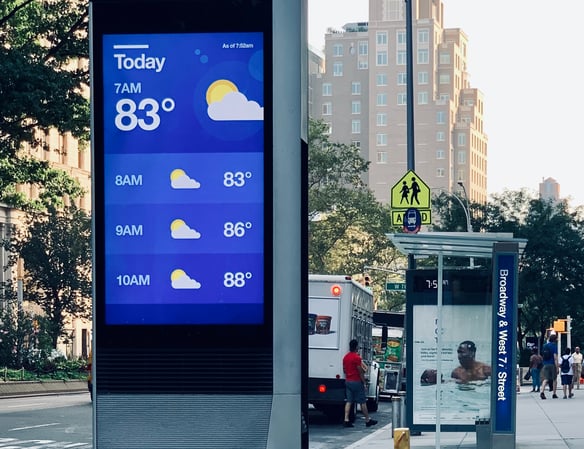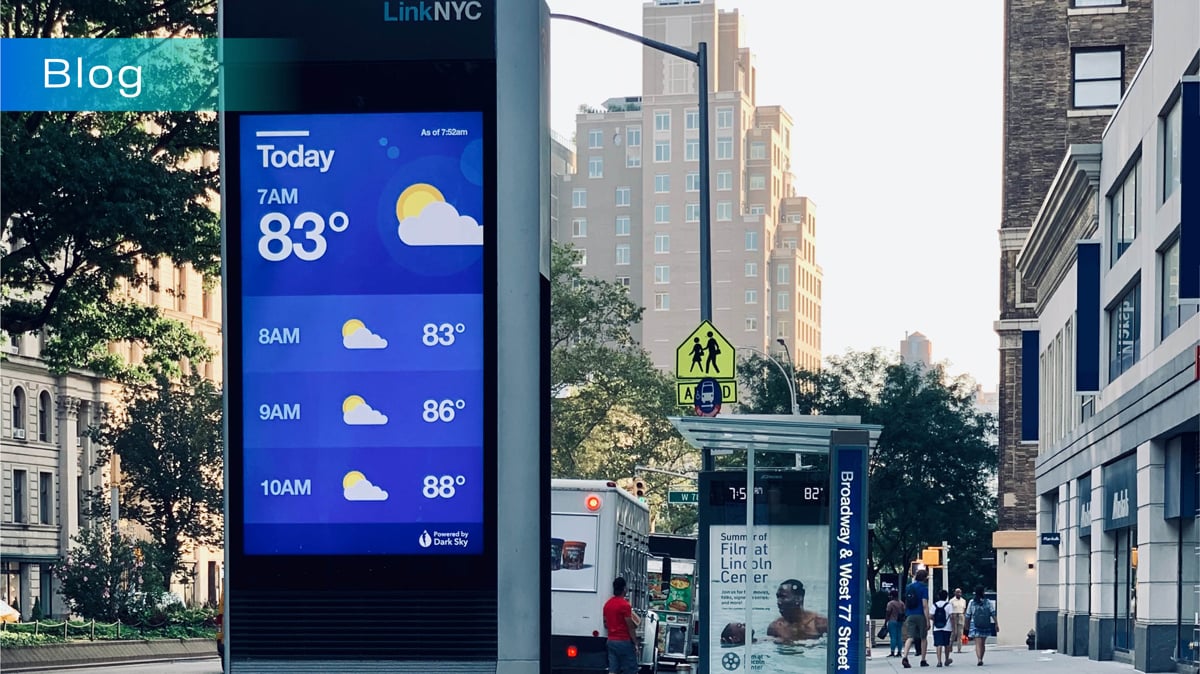Over the past several years, traditional out-of-home advertising has quickly evolved into digital out-of-home (DOOH), a marketing medium where messaging is dynamically displayed in public outdoor spaces. DOOH ad spend is expected to more than double to nearly $16 billion by 2027. A rapid rise in digital billboards and screens across the nation proves itself successful because of DOOHs many advantages when compared with traditional out-of-home advertising.

The majority of DOOH’s success comes from its ability to contextual target by programmatically reaching key locations like wellness centers, restaurants, malls, and more. DOOH advertising is also cost-effective and generates stronger ROI. However, the most important advantage of DOOH can be credited to its ability to track metrics. Once a medium that was recognized as a top-of-funnel tactic, digital out-of-home advertising now has stronger cross-platform capabilities and the power to drive measurable conversions.
In a space that has historically lacked data, DOOH has grown with its development of data-driven solutions. Because of these capabilities, DOOH ad exposure is now directly leading to online behavior, which can be analyzed with the installment of pixels and cookies. These analyses allow brands to measure the effect a DOOH ad has on foot traffic, in-store sales and visitation lift, app downloads, and more.
There are many ways advertisers can leverage digital out-of-home advertising for these metrics to become possible. Today, we’ll discuss the five that attributions you should know before developing your next DOOH campaign.
1. Leverage Anonymous GPS data
By leveraging anonymous mobile GPS data, your brand can determine your prospect’s daily journey, the DOOH ad units they’ve been exposed to, past visitation frequency to your store location, and if whether or not that individual entered your store’s geo-fenced perimeter after being in close proximity to your message. This technology connects digital signals to physical places.
2. Create Geo-Fences Around DOOH Activations or use Mobile Extensions
By creating geo-fences around DOOH unit locations that your message is being displayed on, your brand generates a mobile extension, allowing you to retarget users on their personal devices. From there, specific placement attribution reporting is made possible.
3. Generate QR or Social Scan Codes on Your Creative
By implementing QR or social scan codes within your physical message, your brand is granted the ability to measure direct attribution. An added plus is that QR and social scan codes typically foster high-intent leads since your viewer is performing a conversion-based action.
4. Create a Call-to-Action that Includes a Special Landing Page or SMS Request
Attribute conversions by executing a call-to-action that designates an SMS text message communication post-interaction. Because of this, your brand can measure the number of unique tests sent out and continue the conversation with most-qualified leads.
5. Report on General Online Lift and Sales Lift
If your campaign is geo-targeted to specific markets or ZIP Codes, DOOH effectiveness can be measured and correlated with site traffic, organic searches, and the increase of product sales within those geographies that your DOOH campaign is running in, compared to markets you are not activating DOOH.
Though DOOH is already largely underway when regarding its impact on key advertising metrics, DOOH inventory and location frequency, visitation, and intelligence are only expected to advance significantly… and quickly. DOOH attribution will continue to become more data focused as additional innovative technologies strengthen the correlation between smartphone data and public outdoor display units.




